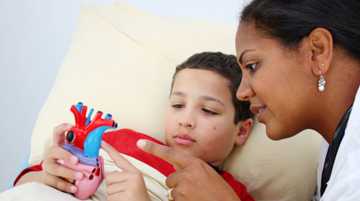Unusual Transplant-associated Infections: Just How Unusual?
Tuesday, November 18, 2014, at 1pm EST.
 In 2013, 28,955 organ transplants were performed in this country. Of these, 22,967 were conducted using organs procured from deceased donors. As impressive as this number may seem, the demand is even greater, with over 123,000 people currently awaiting an organ transplant. The Organ Procurement and Transplantation Network, or OPTN, attempts to increase the number of and access to transplants while working to reduce the risk of transmission of disease from organ donors to recipients. While some organ transplantations are life-saving procedures, serious illness and death can occur from undetected infections in donor organs and tissues.
In 2013, 28,955 organ transplants were performed in this country. Of these, 22,967 were conducted using organs procured from deceased donors. As impressive as this number may seem, the demand is even greater, with over 123,000 people currently awaiting an organ transplant. The Organ Procurement and Transplantation Network, or OPTN, attempts to increase the number of and access to transplants while working to reduce the risk of transmission of disease from organ donors to recipients. While some organ transplantations are life-saving procedures, serious illness and death can occur from undetected infections in donor organs and tissues.
Transplant centers have very little time to evaluate if the need for transplant for a particular recipient outweighs the possible risk of infection from a potential donor. In the case of transplants from deceased donors, time and other factors limit the testing that can be performed prior to transplant and for each donor there is the potential to infect multiple recipients. In addition to laboratory testing, all potential deceased donors undergo a medical risk assessment to screen for potential infectious agents. However, complete and accurate information can be very difficult to obtain at the time of organ donation. Over the past decade, new efforts in surveillance, detection, and screening of health risks have been employed to make transplants safer and to ensure that recipients have the best outcomes possible.
Join us for this session of Public Health Grand Rounds as we present some of the common themes that have emerged in unusual transplant-transmitted infections. Specifically, we will hear about the work that CDC and partners in the organ transplantation community are actively doing to further reduce the risk of unusual transplant-associated infections.
Presentation
Presentation
November 2014
Beyond the Data Beyond brings you "take home" messages for you to use in your practice, in your classroom and in your home.
Dr. Phoebe Thorpe and Dr. Sherif Zaki discuss the important work being done to further reduce the risk of unusual transplant-associated infections.
Ensure that organs are safe requires:
- Involvement by many disciplines including: pathologists, epidemiologists, clinicians, and others
- Global collaboration between federal and state agencies as well as academic institutions
- Continued focus on improving regulations and screening procedures
CDC and its organ transplantation partners encourage viewers to consider organ donation – it really is a gift of life.
Presented By:
Robert Walsh
Director, Division of Transplantation
Healthcare Systems Bureau, Health Resources and Services Administration
“Supply and Demand for Organ Transplantation in the United States”
Daniel Kaul, MD
Director,Transplant Infectious Disease Services, University of Michigan
Chair, Disease Transmission Advisory Committee, United Network for Organ Sharing
“Current Screening of Organ Donors for Donor-derived Infections”
Sherif R. Zaki, MD, PhD
Chief, Infectious Diseases Pathology Branch
National Center for Emerging and Zoonotic Infectious Diseases, CDC
“The Role of Public Health and Pathology in Detecting Emerging Transplant-associated Infections”
Sridhar V. Basavaraju, MD
Commander, U. S. Public Health Service
Medical Officer, Office of Blood, Organ, and Other Tissue Safety
National Center for Emerging and Zoonotic Infectious Diseases, CDC
“Preventing Unusual Transplant-associated Infections
Facilitated By:
John Iskander, MD, MPH, Scientific Director, Public Health Grand Rounds
Phoebe Thorpe, MD, MPH, Deputy Scientific Director, Public Health Grand Rounds
Susan Laird, MSN, RN, Communications Director, Public Health Grand Rounds
- Page last reviewed: November 20, 2014
- Page last updated: November 20, 2014
- Content source:
- Centers for Disease Control and Prevention
- Page maintained by: Office of Associate Director of Communication, Division of Public Affairs



 ShareCompartir
ShareCompartir